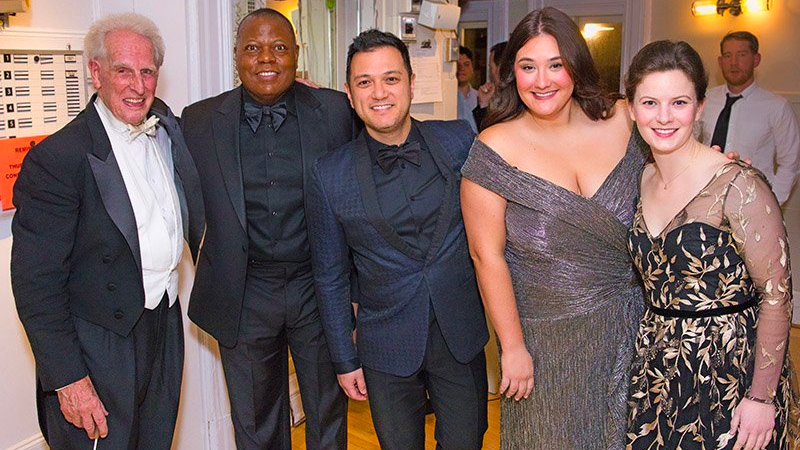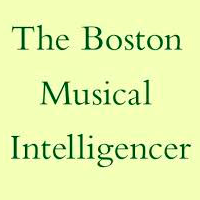Seid umschlungen, Millionen!

The Boston Philharmonic under conductor Benjamin Zander filled Symphony Hall to the brim on Friday night; maybe a half dozen empty seats were visible. It’s refreshing to think that this great hall could attract 2500 people on a cold evening; but then it was Beethoven’s Ninth Symphony, with Chorus Pro Musica and the Marsh Chapel Choir of Boston University combined, so the extended stage nearly overflowed as well.
Beethoven’s metronome markings for this great work have always been shrouded with some controversy. Zander’s promise to take them under advisement (as suggested in BMInt’s discussion with him ten days ago) this time raised our eyebrows in only two instances. The first movement (Allegro ma non troppo; un poco maestoso; i.e., not too fast, and rather majestic), ran more like Toscanini’s than Klemperer’s. The 2/4 meter (often really 4/8), with dotted marchlike beats, should be deliberate throughout, unhurried, so that the dynamic scheme, from pp to sempre ff, has space for melodic shaping. Much of the instrumental excitement in this movement comes from the wind choir; I would have wished for not quite so many strings here, though in the other movements their full strength proved satisfying and essential.
Beethoven marked the Molto vivace second movement 116 to the 3/4 bar; the Presto Trio section, in cut time (2/2), calls for 116 to the half-bar — but this is preceded by a stringendo. Without this stringendo, accelerating to a new tempo, 116 to the half-bar would yield a Presto that would be much too slow; with the stringendo, the new tempo can’t be 116 to the bar, which is way too fast. Most performances accelerate to a Presto of about 140 to the half bar. Zander furiously pushed the Trio after a conventionally relaxed Scherzo, and sometimes the orchestra could barely maintain the pace, despite much heroic and even wonderful playing. Zander may even be correct about how to interpret the metronome markings, which of course Beethoven in 1824 could hear only in his mind. But even if Beethoven would have approved, I don’t approve. The Scherzo of the Ninth Symphony must be one of the most dramatic (and simultaneously lyrical) scherzo movements in the history of symphonic writing; some of that may have to do with the fact that the expansive Scherzo section itself is laid out in sonata form, with abundant and rich modulation. The D major Trio section, by contrast, feels not only gracious and melodically rich but also stately, and with satisfying tonic pedal points. We want to be able to hear these and how they are shaped, but that was hardly possible yesterday.
The four bars, mm. 3-6, of the main melody of the Adagio molto e cantabile third movement, have troubled me ever since I saw them, in short score, written in chocolate icing on the surface of a three-foot-diameter white cake at a memorial service at Tanglewood, on Serge Koussevitzky’s birthday (July 26th) in 1959. In this problematic movement, the double-variation form and ornate melody that verges on the brink of saccharine are almost too rich for comfort. Nevertheless Zander beautifully shaped the tune with convincing, unhurried delicacy. Melodically this movement points to Chopin in the next decade; formally, it points to the uneasily dreamlike slow movement of Mahler’s Fourth Symphony, and Beethoven was, after all, writing for the ages.
Without pause, the Finale began brazenly. Soon we heard the famous Schiller theme, and the memorable “O Freunde, nicht diese Töne!” (Bass-baritone Alfred Walker delivered with portentous power.) I always remember Stravinsky’s derisive but hardly heretical remarks about the “thumping theme” — “As the composer cannot develop it — who could? — he spreads it out like a military parade,” which is exactly the point. But a splendidly variationed choral parade it is, too. If Beethoven hadn’t just been composing his Missa solemnis over several years, he might have realized he didn’t even need to have a solo vocal quartet in this movement, still less with melodic antics that come close to silliness.
We need to remember that this great Finale sets an ode “To Joy,” rather than to boisterousness or rage. The 130-voice-chorus often shouted and too rarely delivered its enthusiasm in well-shaped phrases. The Alla Marcia, a genuine military march with bass drum and cymbals in 6/8, is marked at 84 to the dotted quarter, but we heard it much faster. The clear and focused tenor soloist Nicholas Phan, in his Lieder-singer mode, kept up the brisk pace, though one might have yearned for more heroic tones. The women managed to project over the chorus as required, despite the composer’s cruel demands for range and power; we could actually hear mezzo Ashley Dixon, and soprano Liv Redpath soared. Soon, the chorus reveled in “Alle Menschen, alle Menschen, alle Menschen…” in sequence, and the “beauteous, godly spark!” ignited the ether. The orchestral whirlwind abruptly ending, the audience produced its own godly spark.

Jamie Kirsch and Scott Allen Jarrett prepared their hard-working choruses well. Zander’s masterly control of the considerable forces yielded up a thorough and persuasive Beethoven Ninth, strong if not cosmic or monumental.
Click here to view the Beethoven Symphony no. 9 Collection.
 Mark Devoto - The Boston Musical Intelligencer
Mark Devoto - The Boston Musical Intelligencer